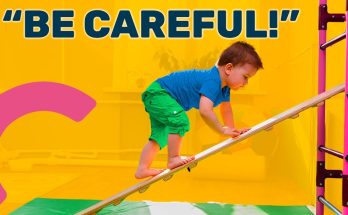Crawling is a major milestone in a baby’s development, marking an important step toward independence and mobility. While every baby develops at their own pace, most begin crawling between 6 and 10 months. Some may start earlier, while others may take a little longer or even skip crawling altogether, going straight to walking. Encouraging your baby to crawl not only helps strengthen their muscles but also improves coordination and spatial awareness.
If you’re wondering how to help your baby start crawling, here are seven practical tips to encourage and support their progress.
1. Give Your Baby Plenty of Tummy Time
Tummy time is one of the best ways to help a baby develop the strength needed for crawling. It helps strengthen the muscles in their neck, shoulders, arms, and core—essential for moving forward on their own.
How to do it:
- Start tummy time as early as a few weeks old by placing your baby on their tummy for a few minutes at a time.
- As your baby grows, gradually increase tummy time sessions.
- Use toys, mirrors, or engaging sounds to keep your baby entertained while on their belly.
- If your baby resists tummy time, try placing them on your chest while lying down—it can be a comforting alternative.
2. Encourage Reaching for Toys
Babies are naturally curious, and using toys to encourage movement is a great way to motivate them to crawl.
How to do it:
- Place a favorite toy just out of reach while your baby is on their tummy.
- Gently encourage them to move toward it by clapping, cheering, or using an excited voice.
- You can also use a rolling ball to encourage forward motion—babies love chasing after moving objects!
This technique helps babies practice shifting their weight, an important skill for crawling.
3. Use a Crawling-Friendly Surface
The right surface can make a big difference in how comfortable and motivated your baby is to move.
Best surfaces for crawling:
- Soft rugs, carpets, or play mats provide traction and reduce slipping.
- Hardwood or tile floors can be too slippery; if using these surfaces, place a non-slip mat down.
- Avoid overly soft bedding, which can make it harder for your baby to push up and move.
A comfortable and supportive surface helps babies gain confidence as they attempt to crawl.
4. Support Your Baby in the Right Positions
Before babies start crawling, they typically experiment with different movements, such as rocking back and forth on their hands and knees. Helping them into these positions can build their confidence.
How to do it:
- When your baby is on their tummy, gently guide their arms forward to support their weight.
- Place your hands under their feet while they’re on their belly—this gives them something to push off.
- Encourage your baby to get into the “all-fours” position by placing a small, rolled-up towel under their chest for support.
This gentle assistance helps babies understand how to use their muscles effectively.
5. Reduce Time in Baby Gear
Too much time in baby seats, swings, or walkers can limit the opportunities for movement and delay crawling development.
What to do instead:
- Allow your baby plenty of floor time each day.
- Create a safe space where they can explore freely.
- Encourage them to move on their own rather than relying on supportive devices.
The more time babies spend practicing movement, the faster they will develop crawling skills.
6. Demonstrate Crawling Yourself
Babies learn by watching, so one of the best ways to teach crawling is to get on the floor and demonstrate it yourself!
How to do it:
- Get down on your hands and knees and crawl toward your baby while smiling and talking.
- Encourage them to copy your movements by making it fun—perhaps adding playful sounds or clapping.
- Use siblings or older children to model crawling as well.
Seeing others crawl can inspire babies to try it themselves.
7. Be Patient and Make It Fun
Every baby develops at their own pace, and some may take longer to crawl than others. Making the experience fun and stress-free helps build their confidence and motivation.
Tips for keeping it fun:
- Turn crawling into a game by cheering your baby on.
- Avoid pressuring them—let them progress at their own pace.
- Offer encouragement, but don’t force movements if they aren’t ready.
Some babies might prefer scooting on their bottom, rolling, or even skipping crawling altogether and moving straight to walking. That’s perfectly okay—each baby follows their unique developmental journey.
Signs Your Baby Is Getting Ready to Crawl
Before babies officially start crawling, they typically show these signs:
✔ Rocking back and forth on hands and knees
✔ Pushing up on their arms while on their tummy
✔ Scooting backward before moving forward
✔ Reaching forward while on their belly
If your baby is showing these signs, they are likely close to crawling!
When to Be Concerned
While it’s normal for babies to crawl at different times, talk to your pediatrician if:
- Your baby isn’t showing any interest in movement by 12 months.
- They seem to have difficulty using one side of their body.
- They are overly stiff or floppy when attempting movement.
Most babies will develop mobility skills in their own time, but if you have concerns, a pediatrician can help assess their progress.
Conclusion
Helping your baby learn to crawl is an exciting and rewarding process. By encouraging tummy time, using toys for motivation, creating a safe crawling space, and modeling movement, you can support your baby’s development in a fun and natural way. Every baby reaches milestones at their own pace, so the key is to be patient, make it enjoyable, and celebrate every small achievement along the way!
With time and encouragement, your little one will be moving around independently before you know it. Enjoy this special stage of their growth!



